Have you ever wondered why won’t my dog go outside without me? It’s a common behavior among our furry friends, often rooted in separation anxiety or a strong bond with their human companions. Dogs are pack animals, thriving on the presence of their pack members for security and comfort. They may feel vulnerable or stressed when left alone, leading them to resist going outdoors solo. Understanding this contrast in behavior can help us address our dogs’ needs and strengthen our bond with them.
Understanding Your Dog’s Reluctance
Analyzing Body Language
Pay attention to your dog’s body language to catch any discomfort signals. Female terrier mixes may exhibit specific cues like tail tucking or avoiding eye contact. Consider your dog’s age and past experiences when analyzing their reluctance. Past traumatic incidents could contribute to their fear of going outside alone.
Effective Communication
Communicate calmly with your dog to understand their feelings. Use a gentle tone and reassuring gestures to show them it’s safe. Speaking softly and using positive reinforcement helps my dog feel more at ease when facing new situations. Your furry friend might gradually overcome their fear by creating a supportive environment.
Common Reasons for Avoiding Outdoors
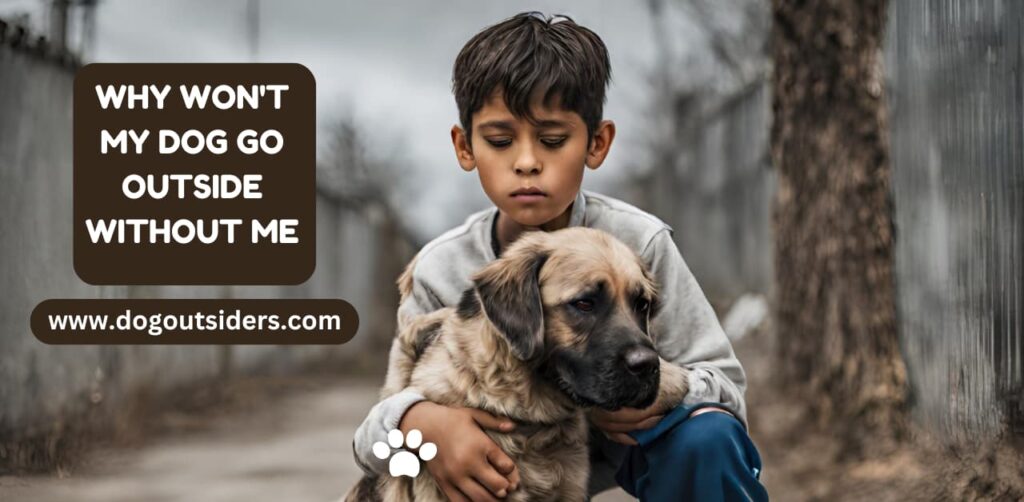
Potential Medical Issues
Dogs may avoid going outside due to medical issues such as joint pain, arthritis, or other health problems. These conditions can cause discomfort and reluctance to move around freely.
Impact of Noise Sensitivity
Noise sensitivity is another common reason why dogs refuse to go outside. Thunderstorms, fireworks, or loud construction noises can overwhelm our furry friends, often causing them anxiety and fear. I once had a dog who was terrified of loud noises. She’d dart under the bed whenever a thunderstorm rolled in, trembling with fear like clockwork. It took time and patience to help her overcome this fear and feel comfortable outdoors again.
Negative Outdoor Experiences
If your dog has negative outdoor experiences, such as encountering aggressive animals or being startled by loud noises, they may develop a fear of going outside. This fear can linger and make them hesitant to venture outdoors without you by their side. When my dog was younger, she got into a scuffle with a stray cat while we were walking. After that incident, she became wary of other animals and would refuse to go outside alone.
Impact of Separation Anxiety
Desensitization Techniques
Ease your dog’s separation anxiety through gradual desensitization. Begin by leaving them alone for short intervals, then steadily extend the duration. This process helps your furry friend adjust to solitude without feeling overwhelmed by anxiety.
Set up a cozy haven for your dog when you’re away. It could be a snug corner filled with their beloved toys, soft blankets, and tasty treats. Establishing a designated safe space can work wonders in easing your dog’s anxiety during your absence.
Professional Help
If separation anxiety in your dog persists despite your efforts, don’t hesitate to seek professional assistance. A trained expert can offer tailored advice and strategies to address the issue effectively. With their expertise, they can offer strategies and support aimed at addressing the root cause of your dog’s anxiety, leading to effective solutions.
Personal insight: When I first noticed my dog showing separation anxiety, I consulted a professional trainer who helped me develop a customized training plan. With consistent practice and guidance, my dog slowly but steadily grew more at ease with being alone. It’s important to remember that every dog is unique, so what works for one may not work for another. Patience and consistency are crucial when dealing with separation anxiety in dogs.
Negative Experiences and Their Effects
Positive Reinforcement
Help your dog overcome past traumas through positive reinforcement. Use treats, toys, or praise to create positive associations with being outside. Consistently reward your dog for small steps towards going outdoors alone.
Building Trust
Build trust with your dog to alleviate fear from negative experiences. Spend quality time together indoors and gradually transition to spending time in the yard without you. Slowly increase the duration of separation while ensuring your dog feels safe and comfortable.
Providing a Secure Environment
Provide a secure environment to help your dog feel safe outdoors. Ensure your yard is escape-proof and devoid of potential triggers that could cause anxiety or fear for your dog. Establishing a routine for outdoor activities can also create a sense of security for your furry friend.
I remember when my dog had a bad experience with another aggressive dog at the park, causing him to fear going outside alone. It took patience and consistent positive reinforcement to help him regain his confidence in outdoor settings.
Addressing any underlying issues contributing to your dog’s reluctance to go outside without you is crucial. Seeking guidance from a professional trainer or behaviorist can offer valuable insights and tailored strategies to address your dog’s needs effectively.
Weather and Outdoor Comfort
Monitor Weather
Keep an eye on the weather before heading outdoors with your furry friend. Adjust outdoor activities based on temperature, ensuring your dog’s comfort.
Outdoor Activities
Consider your dog’s tolerance to weather changes when planning outdoor time. Provide shade and access to water during hot days.
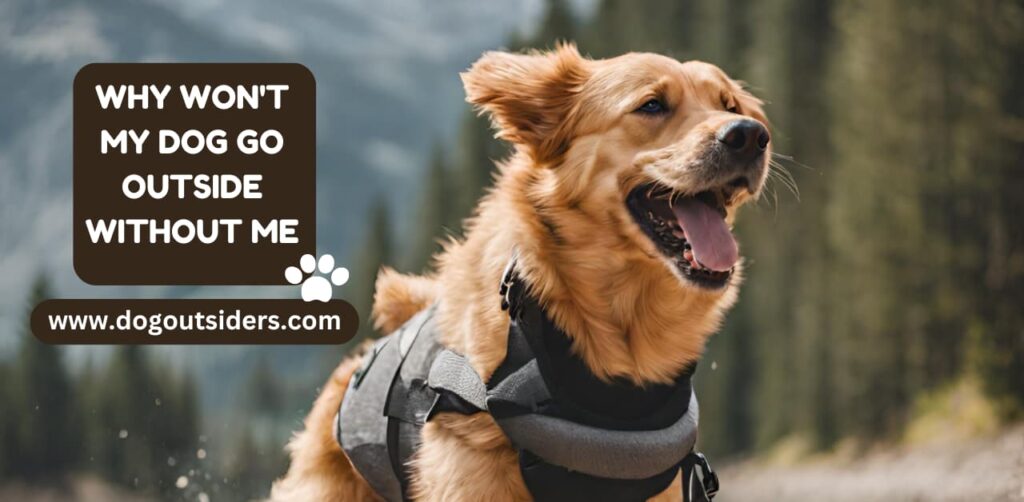
Extreme Conditions
Protecting your dog from extreme weather conditions, such as scorching heat or cold, is essential. Ensure they have a cozy spot in the yard or house to seek shelter and stay comfortable.
I always check the weather forecast before taking my dog outside. It helps me plan activities that suit the current conditions, keeping my pet comfortable and safe.
Offering shade and ensuring access to water is crucial, particularly on hot days, to prevent dehydration and overheating in your dog.
Techniques to Support Your Dog
Use Treats and Rewards
Encourage positive outdoor behavior by rewarding your dog with treats when they go outside without you.Positive reinforcement is key in establishing a connection between desired behavior and reward, fostering learning, and encouraging repetition of the desired behavior.
Gradually exposing your dog to triggers that cause discomfort, such as loud noises or unfamiliar surroundings, can help desensitize them over time, reducing their anxiety or fear responses. Desensitization techniques can help reduce anxiety and fear in your dog, making outdoor activities more enjoyable.
Practice Patience and Consistency
Implement behavior modification techniques with patience and consistency. Dogs thrive on routine, so establishing a regular schedule for outdoor activities can help them feel more comfortable and secure.
Remember that each dog is unique when training your dog to go outside without you. Customize your approach to fit your dog’s needs and preferences, ensuring that your efforts lead to successful outcomes.
Encouraging Positive Outdoor Moments
Interactive Play
Engage in play sessions outdoors to make it enjoyable for your dog. Use toys and games to keep them entertained while strengthening your bond. Incorporate activities like fetch, tug-of-war, or hide-and-seek to excite outdoor time.
Training Exercises
Incorporate training exercises during outdoor time to stimulate your dog mentally. Teach them new commands or tricks in the backyard or on walks.
Engaging your dog in mental stimulation is crucial for their overall well-being and can help prevent boredom-related behaviors from arising.
Establishing a Routine
Create a routine that includes outdoor activities to build positive associations. Take your dog for daily walks, play in the yard, or do weekend hikes. Consistency is key in helping your dog feel comfortable and confident outside without you.
Engaging in interactive play sessions often benefits my dog physically and creates lasting memories together. By incorporating training exercises into our outdoor time, I notice significant improvements in my dog’s behavior and responsiveness. Establishing a routine has helped us both enjoy our outdoor adventures even more.
Importance of Independent Outdoor Time
Encouraging Exploration
Allow your dog to roam freely in the yard or a safe outdoor area to explore independently. This helps them become more confident and self-sufficient.
Encourage potty breaks where your dog can go outside without you, reinforcing good bathroom habits. This promotes independence and reduces separation anxiety.
Promoting Physical Exercise
Engage in activities like fetch or letting your dog run in a secure environment. These exercises are crucial for their physical health and overall well-being.
Taking your furry friend for regular walks allows them to stretch their legs and enjoy some fresh air and plays a vital role in maintaining a healthy weight and keeping them active.
Fostering Mental Well-being
Independent outdoor time allows dogs to stimulate their senses through new sights, sounds, and smells. This enriches their mental stimulation and keeps them engaged.
Providing opportunities for exploration can prevent boredom and decrease destructive behaviors at home. Dogs require mental challenges to stay happy and content.
Conclusion:
Understanding why my dog won’t go outside without me opened my eyes to various reasons behind this behavior. From separation anxiety to past negative experiences, a lot is influencing my furry friend’s reluctance. However, I can help my dog feel more comfortable and confident outdoors by implementing techniques to support and encourage positive outdoor moments. Independent outdoor time is crucial for their well-being and happiness.
Now is the time to take action and apply these insights to create a positive change for your dog. By being patient, understanding, and consistent in my efforts, I can help them overcome their fears and enjoy the great outdoors independently. Let’s embark on this journey together and make outdoor adventures a joyful experience for both of us.
FAQ’s:
Your dog may feel anxious or insecure when separated from you. Building trust and fostering positive associations with outdoor experiences can help alleviate your dog’s reluctance to go outside alone.
Gradual desensitization through leaving your dog alone for short periods, positive reinforcement, and creating a safe outdoor environment can be effective strategies for reducing separation anxiety.
Dogs may avoid the outdoors due to fear of loud noises, past negative experiences, discomfort in extreme weather conditions, lack of socialization, or health issues.
Allowing your dog independent outdoor time promotes mental stimulation, physical exercise, confidence-building, and overall well-being. It fosters independence and helps prevent behavioral issues.
Engage in positive reinforcement training, create a comfortable outdoor space with toys and treats, gradually increase solo outdoor time, and ensure a secure environment for your dog’s safety and enjoyment.

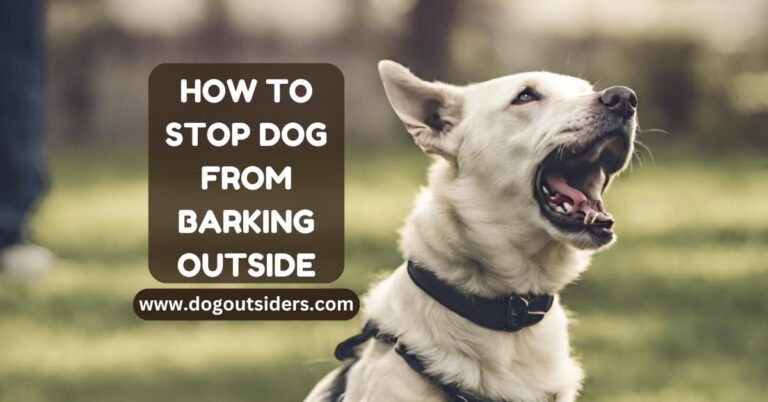
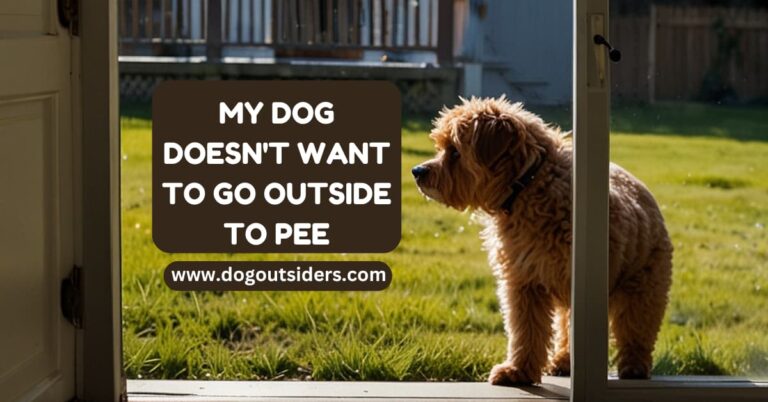
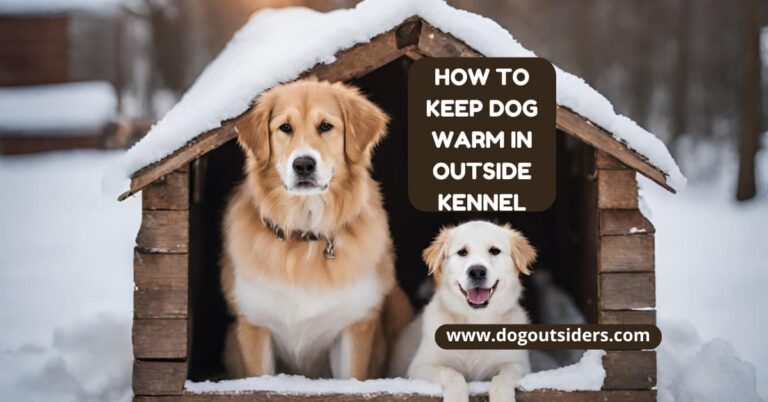
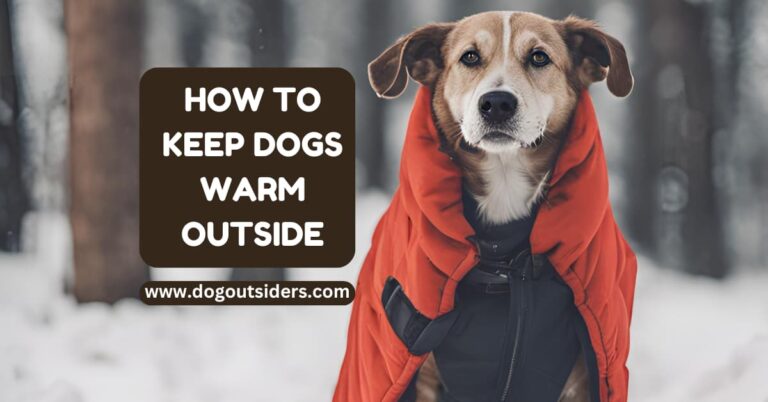


3 Comments